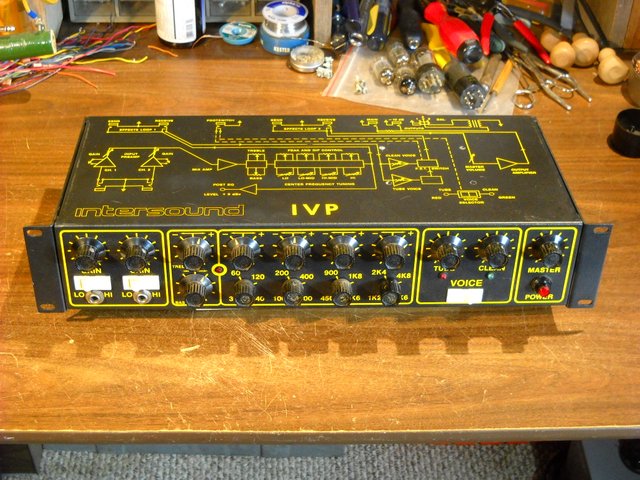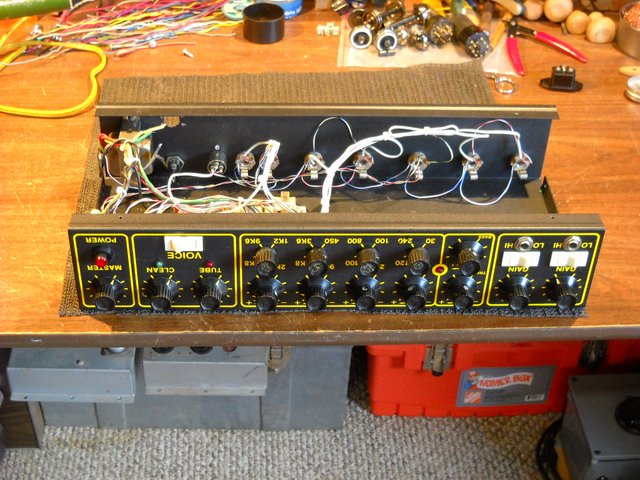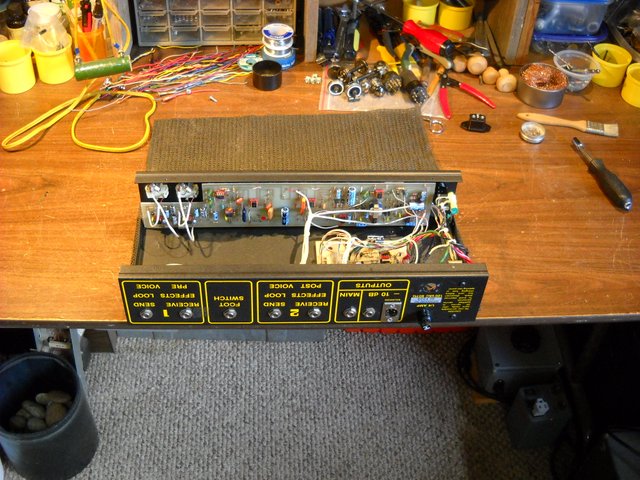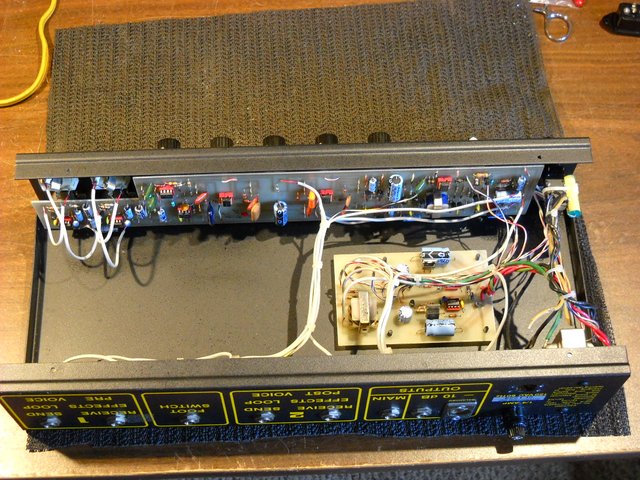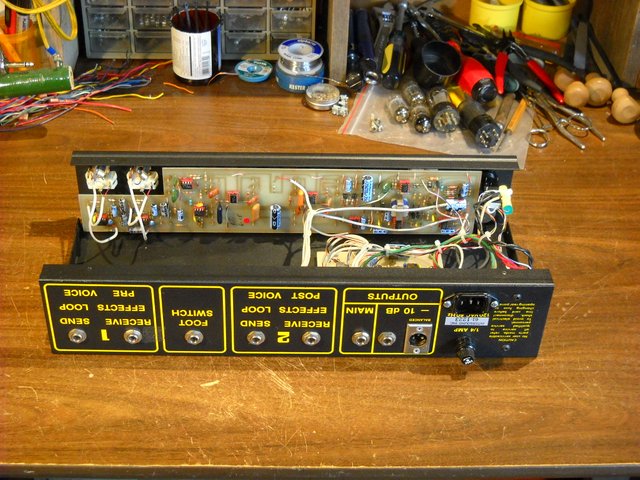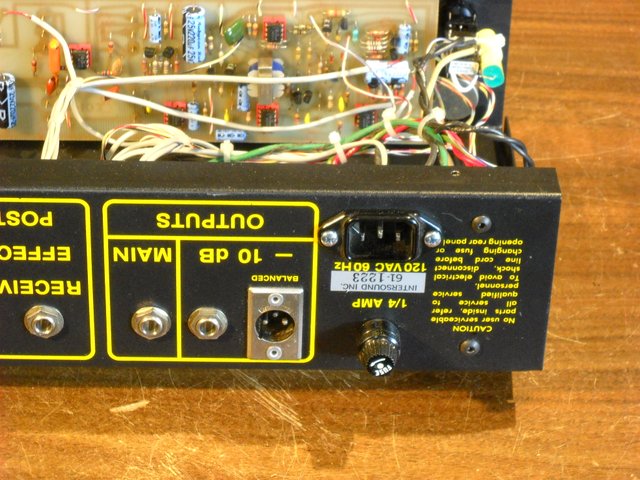Hello, steemians, and welcome to my page, eh!
As you probably already know, my friend Adam brings me musical instrument gear to work on from time to time. He brought me this rackmount preamp unit a month or so ago, and I finally got around to working on it a couple of weeks ago. I worked on it a little here and there as I had the time and ambition to do so. This is the preamp unit.
When I first tested it, several of the controls were scratchy when you would turn them, and it had a buzz in the sound. This is an all solid state unit, no tubes, so I wasn't sure where to look for the buzz. I figured that I would clean the controls first and then worry about the buzz after. I took the cover off and gave it a visual inspection first to see if I could see any obvious problems. There weren't any that I could spot, other than the insulation cracking off the power cord wires inside the amp. I decided to replace the power cord while I had it open. It's better than just taping up the bare spots on the wires, especially because moving the wires while taping them up would just cause more of the hardened insulation to crack and fall off.
I cleaned the controls with a tuner cleaner spray that has an electrical contact cleaner and a lubricant in it. The lubricant is important for the operation of the control to keep it from binding when you're adjusting the control.
During this process, I noticed that one of the capacitors on the power supply board seemed to be loose, so I checked that and found out that one of the leads was loose from the solder joint. I had to pull the power supply board out of the unit to be able to resolder it. The smaller circuit board is the power supply board.
After I had fixed that and made sure all the other solder connections on the board were good, I decided that instead of just installing another power cord in the unit, I would install a removable power cord socket. It's so much easier to haul musical gear around when you can just remove the cord instead of having to wrap it up and get it out of the way somehow. I think most working musicians would agree with that.
I had to cut the hole for the power cord socket to go into in order to install it. I put the socket in the same place as the old power cord had been, I just had to make the hole bigger to fit the socket. I drilled out as much metal as I could, and then did the rest with a file.
I think the results of that look pretty good, like it was always there. One thing that would make it a bit better is if the screw heads were black, but I don't have any of those to put in.
These preamps were pretty well known and regarded back in the late 1970s and through the 1980s. These units were used as stage preamps by several big name musicians, including Bob Weir of the Grateful Dead. He is known to have been using one of these preamps for live performance in 1979. There are pictures of him playing on stage with it visible behind him. I've read several reviews on it in various places on the internet and it is apparently still a good choice for a preamp-poweramp setup. This is a 2 channel preamp with a bass and treble control and a 5 band parametric equalizer. It also has effects sends and returns on it, and can be channel switched with a footswitch as well as a panel switch. The distortion channel is said to have a very good tube distortion emulator.
I'm actually quite tempted to buy this unit from my friend, since his business is buying and selling this kind of gear, among other things. I think this could make a really good recording preamp for both bass and guitar. I think it would be interesting to record a guitar through this directly, and also with a mic in front of a speaker pushed by a small power amp with the signal from the preamp at the same time.
Well, that's all I have for this post, I hope you found it interesting!
Thanks for stopping by and checking out my post, eh!




